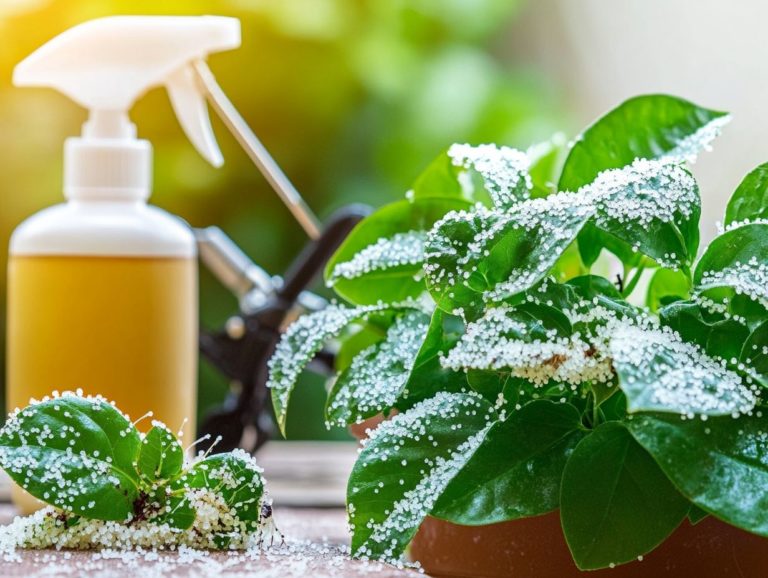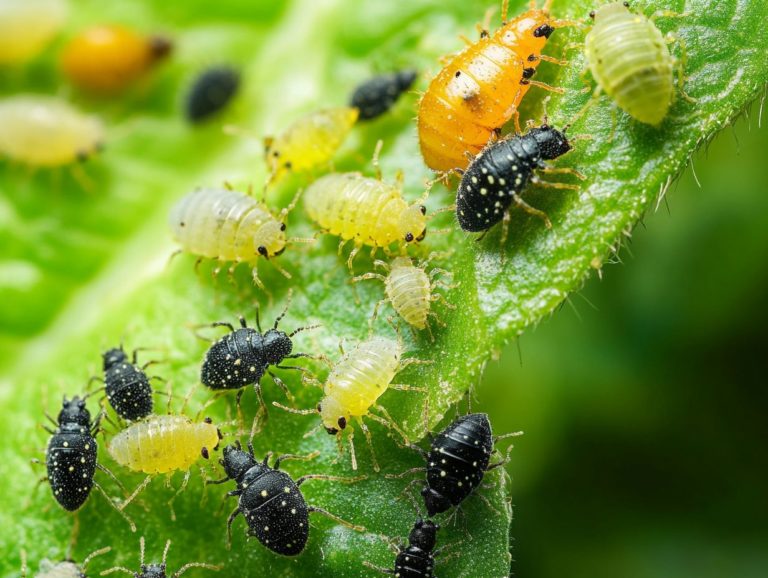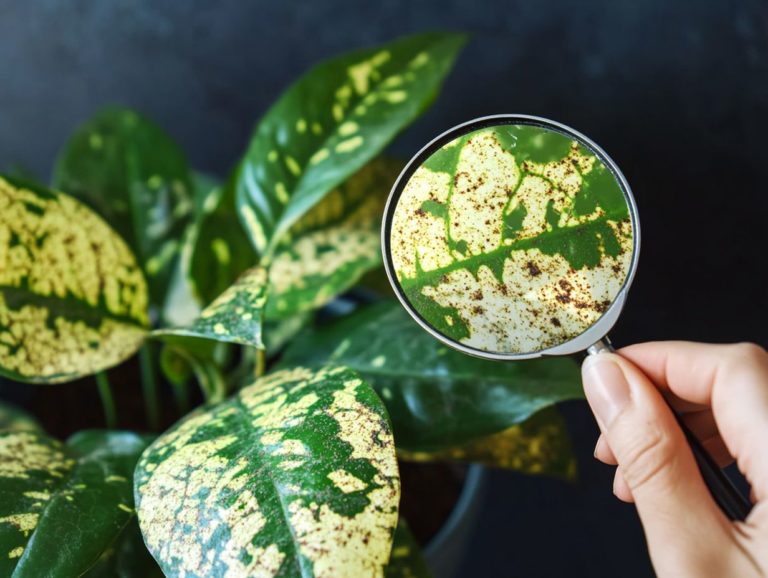Creating a Pest-Friendly Indoor Garden
Indoor gardening provides a wonderful escape. It allows you to cultivate lush greenery right in the comfort of your home.
Imagine creating a thriving oasis that’s not only beautiful but also welcoming to beneficial pests. This article delves into the myriad benefits of indoor gardening. We’ll guide you through selecting low-maintenance, pest-resistant plants and equipping your garden with essential supplies.
You ll also discover effective pest management strategies and alternative control methods. This ensures your indoor paradise thrives for years to come.
Ready to transform your space into a green paradise? Let s dive in!
Contents
- Key Takeaways:
- Benefits of Indoor Gardening
- Choosing the Right Plants
- Setting Up Your Indoor Garden
- Preventing and Managing Pests
- Maintaining Your Indoor Garden
- Alternative Pest Control Methods
- Frequently Asked Questions
- What are some benefits of creating a pest-friendly indoor garden?
- What are some common pests that can invade an indoor garden?
- How can I prevent pests from invading my indoor garden?
- What are some natural pest control methods for an indoor garden?
- Can certain plants attract pests to my indoor garden?
- Can I still have a pest-free indoor garden without using chemicals?
Key Takeaways:
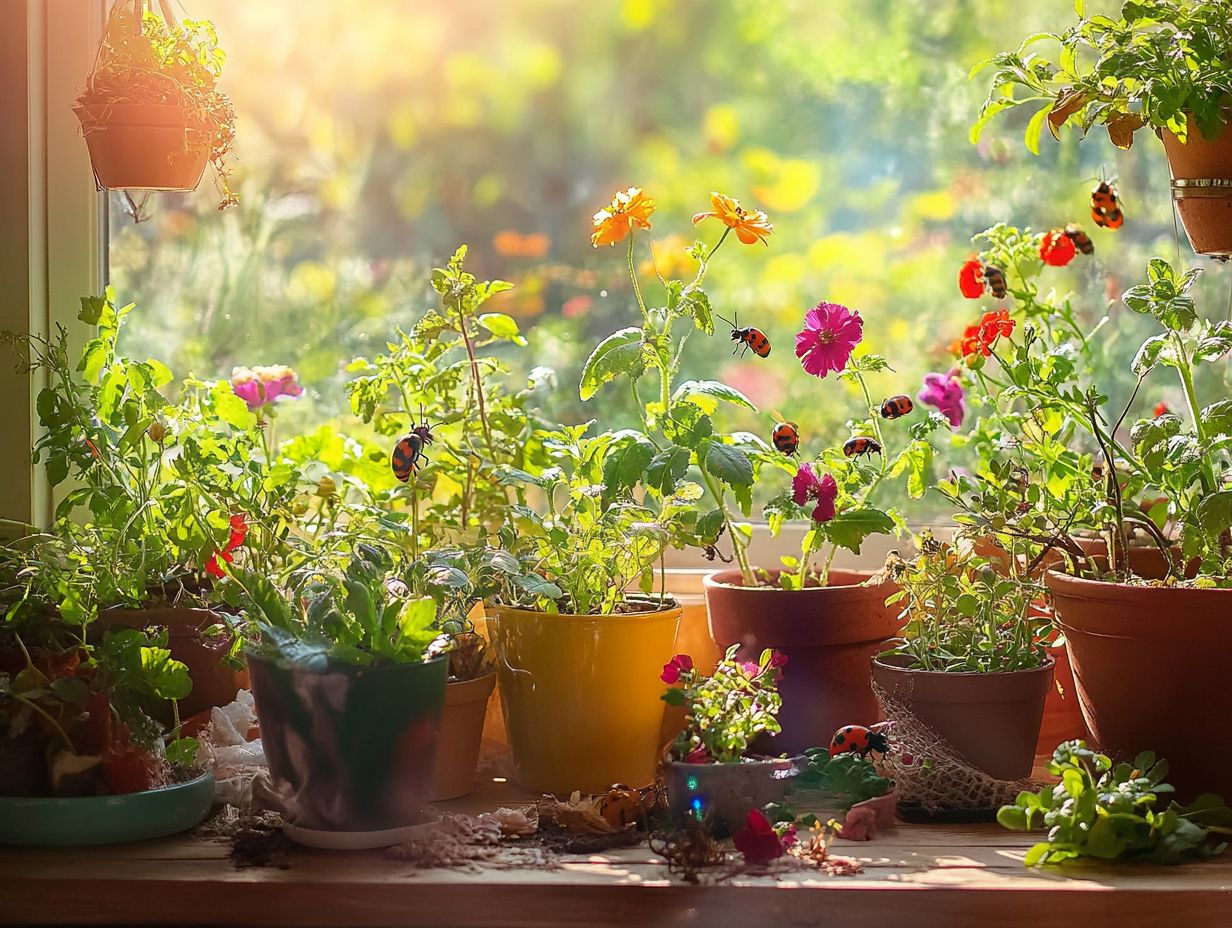
- Breathe easier with a pest-friendly indoor garden that purifies the air and lowers stress!
- Choose easy-care plants like herbs and succulents for a thriving green space!
- Maintain a healthy and pest-free indoor garden by using essential supplies, identifying common pests, and implementing natural pest control methods.
Benefits of Indoor Gardening
Indoor gardening presents a wealth of benefits that enhance both your living environment and overall well-being. By cultivating an indoor garden, you can significantly improve air quality and embrace a sustainable lifestyle through organic practices.
Growing plants indoors creates a clean gardening area. It enhances water quality and alleviates stress. Your indoor garden can also be a serene retreat. It boosts your mental health and gives you a fulfilling sense of accomplishment as you nurture your flourishing greenery.
Why Create a Pest-Friendly Indoor Garden?
Creating a pest-friendly indoor garden might seem odd at first. However, it encourages a natural balance that tackles pest problems while keeping your plants healthy. By welcoming beneficial insects into your indoor garden ecosystem, you promote integrated pest management (keeping pests under control using natural methods).
This approach nurtures the positive effects of insects like ladybugs and lacewings. These insects feast on common pests such as aphids and thrips. It cultivates a sustainable environment where your plants can truly thrive. Understanding indoor plant pest resistance and the relationship between harmful and beneficial species enables you to design spaces that attract these helpful allies.
As you do this, you ll create an indoor sanctuary that flourishes with ecological harmony. This leads to healthier plants and a more enjoyable gardening experience.
This natural method demonstrates how a balanced garden can effectively address pest issues without resorting to environmentally harmful solutions.
Choosing the Right Plants
Selecting the right plants for your indoor garden is vital. You want to cultivate an environment that is not only stunning but also effortlessly manageable. By choosing low-maintenance and pest-resistant varieties, you simplify your gardening routine.
The plants you choose can profoundly impact the health and longevity of your indoor garden. This transforms it into a flourishing retreat you can truly enjoy.
Low-Maintenance and Pest-Resistant Options
Creating your indoor garden? Choose low-maintenance, pest-resistant plants to save time and reduce pest problems. Consider snake plants, pothos, and certain succulents; they thrive easily and resist common indoor pests.
ZZ plants and peace lilies can enhance your indoor ambiance with minimal care. The snake plant flourishes in low light and needs infrequent watering, making it perfect for busy lifestyles.
Pothos adapts to various lighting and thrives on neglect, needing little water. Succulents add striking shapes and vibrant colors while conserving water, making them modern and efficient choices!
These plants improve air quality and create a calming atmosphere, essential for your eco-friendly living space.
Setting Up Your Indoor Garden
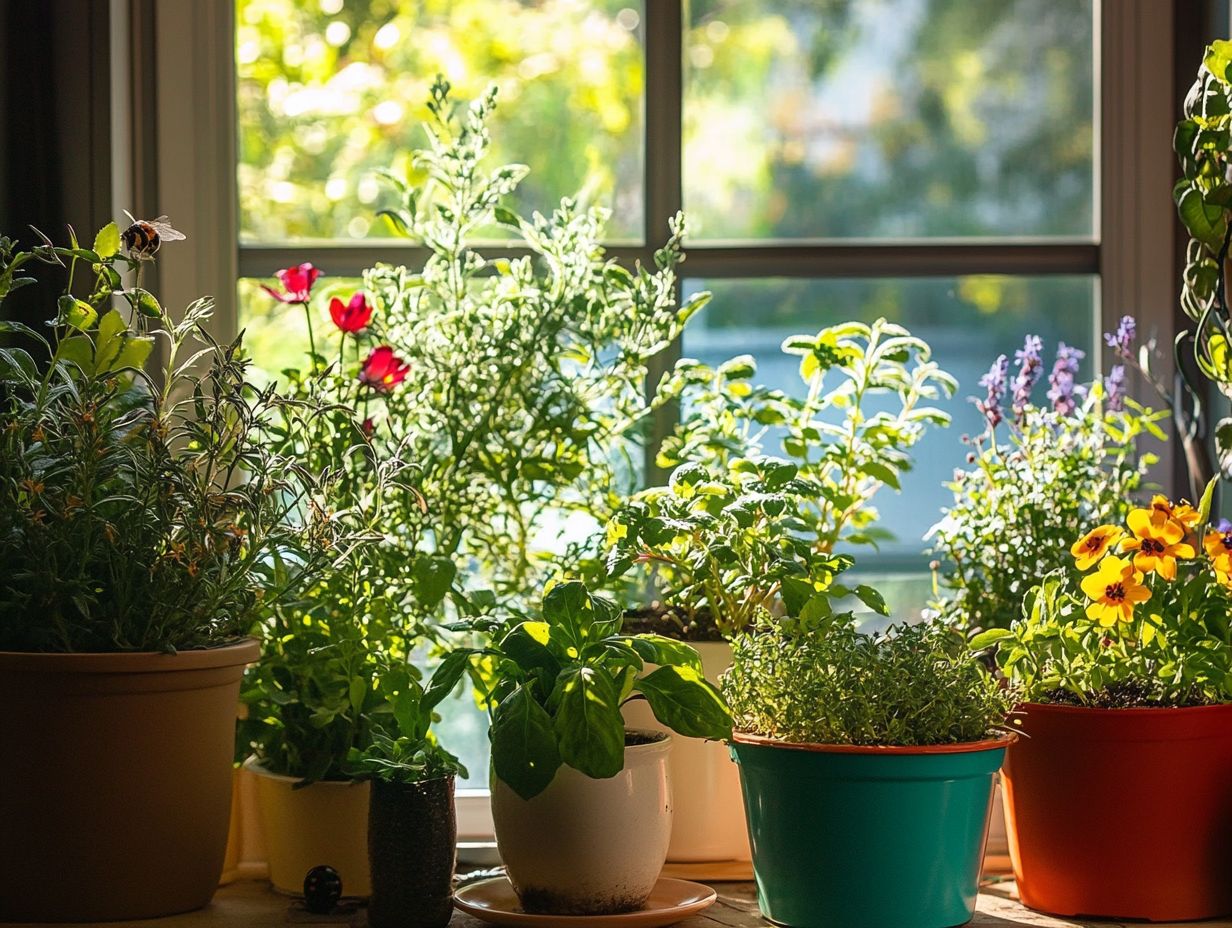
Setting up your indoor garden requires careful planning and essential supplies to create a suitable environment for your plants. Invest in quality gardening tools and select the right soil; every component is vital for a thriving indoor ecosystem.
Don t forget about light, humidity, and temperature! These factors significantly influence your garden’s health and vitality.
Essential Supplies and Equipment
Your indoor garden needs top-notch gardening tools, organic soil, and effective pest management solutions. By choosing the right tools, like pruning shears and grow lights, you’ll simplify maintenance.
A moisture meter ensures your plants receive the right amount of water. Seed trays are great for starting seedlings in a controlled environment, while organic soil fosters healthy root development.
For pest management, solutions like insecticidal soap and neem oil are essential. They tackle indoor pests without harming beneficial insects or leaving toxic residues. With these supplies, your indoor space will thrive and resist threats!
Preventing and Managing Pests
Managing pests is crucial for your plants’ health. Use effective strategies like eco-friendly solutions and biological controls to create a flourishing environment while avoiding harsh chemicals.
This approach promotes robust growth and enhances the vitality of your indoor oasis.
Identifying and Dealing with Common Pests
Spotting common pests is essential for protecting your plants. Pests like whiteflies, aphids, and spider mites can cause severe damage if not addressed quickly.
Each pest has telltale signs. Observe closely, and you’ll notice aphids and spider mites before they spread diseases. Swift action is critical!
Consider inviting beneficial insects like ladybugs into your garden. Using organic sprays made from neem oil or insecticidal soap is an eco-friendly way to eliminate pests while protecting the environment. For more options, explore effective pesticides for indoor plant care.
Maintaining Your Indoor Garden
Maintaining your indoor garden requires ongoing attention and care to ensure long-term success and optimal plant health. By regularly monitoring your plants and making sure they receive proper watering, adequate light exposure, and effective pest management, you can cultivate a thriving indoor ecosystem that flourishes beautifully throughout the year.
Tips for Long-Term Success
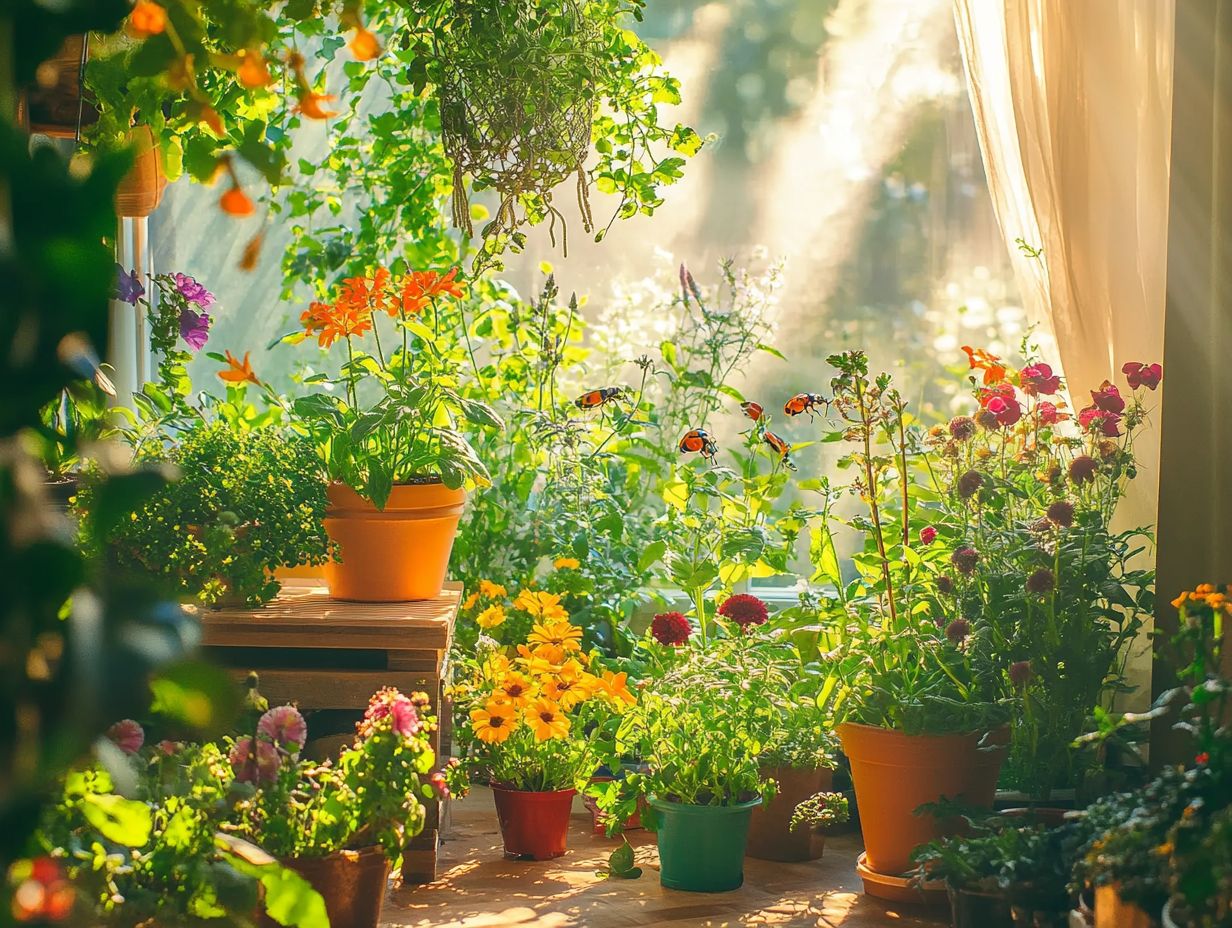
Achieving long-term success in your indoor garden requires a thoughtful blend of proper care and consistent monitoring. Staying informed about your plants’ needs and creating their ideal environment allows you to enjoy the rewards of a healthy and thriving indoor oasis.
Regular fertilization is essential for plant health. It provides the vital nutrients that encourage growth and flowering. Using organic fertilizers at the recommended intervals benefits your plants and enriches the soil over time, paving the way for vibrant greenery.
Keep a close eye on pests so you can quickly tackle any unwanted visitors. Seasonal adjustments are important; for example, tweaking your watering schedule as humidity levels change can help prevent root rot during the chilly winter months.
By incorporating these practices into your daily routine, you set yourself up for flourishing plants throughout the year.
Alternative Pest Control Methods
Exploring alternative pest control methods opens the door to natural and non-toxic solutions that nurture a thriving indoor garden. By adopting eco-friendly practices, you can protect your plants while significantly reducing your environmental footprint.
Natural Solutions
Natural solutions for pest control are crucial for maintaining an eco-friendly indoor garden. Products like neem oil and insecticidal soap can effectively manage pests without harming beneficial insects or compromising your plants’ health.
Consider introducing beneficial insects such as ladybugs and lacewings; they can naturally feed on common pests like aphids and spider mites. For more comprehensive strategies, check out this guide on how to create a pest-free indoor garden. Another effective method is using a natural substance that damages the exoskeletons of crawling insects, helping to keep them at bay.
Integrating these biological controls enhances your garden’s ecosystem and aligns with a balanced approach to pest control. To further protect your indoor plants, consider preventing pest infestations with strategic methods. By combining these techniques, you can create an environment where your plants thrive while naturally managing any unwanted pests.
Frequently Asked Questions
What are some benefits of creating a pest-friendly indoor garden?
Creating a pest-friendly indoor garden can help improve air quality, reduce stress, and enhance overall happiness and well-being.
What are some common pests that can invade an indoor garden?
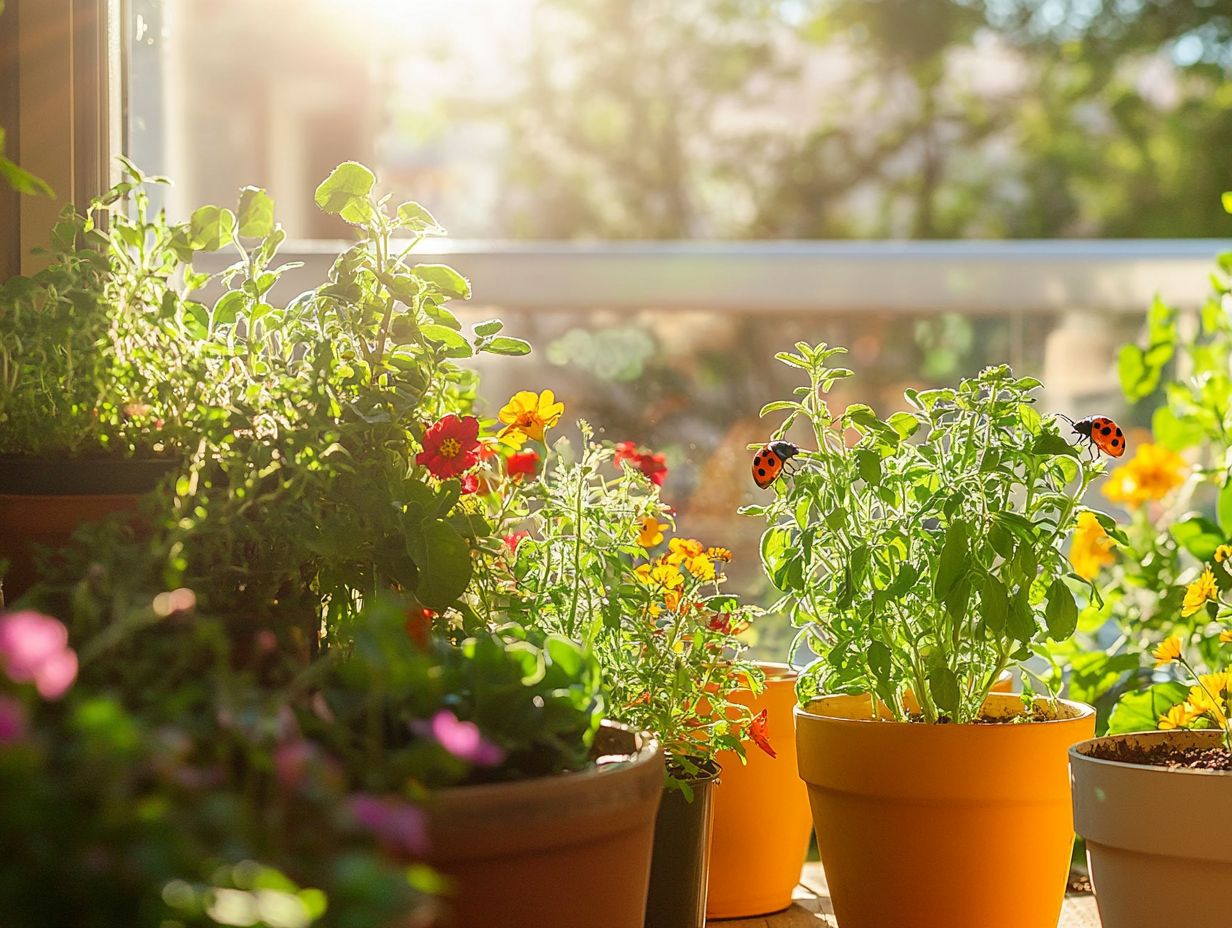
Common pests that can invade an indoor garden include aphids, spider mites, whiteflies, and fungus gnats.
How can I prevent pests from invading my indoor garden?
Preventive measures include regularly cleaning and inspecting plants, using natural pest control methods, and keeping the garden area clean and clutter-free.
What are some natural pest control methods for an indoor garden?
Natural pest control methods for an indoor garden include using essential oils, introducing beneficial insects, and applying organic pesticides.
Can certain plants attract pests to my indoor garden?
Yes, some plants, like succulents and herbs, can attract pests such as mealybugs and aphids. It’s important to research which plants are more prone to pests and take extra precautions with them.
Can I still have a pest-free indoor garden without using chemicals?
Yes, there are many natural and organic methods for controlling pests in an indoor garden. By regularly inspecting and maintaining your plants, using natural repellents, and introducing beneficial insects, you can maintain a pest-free garden without harsh chemicals.
Have more questions? Feel free to ask or share your tips in the comments below!


